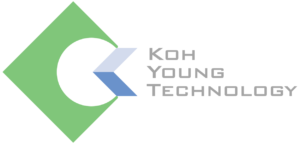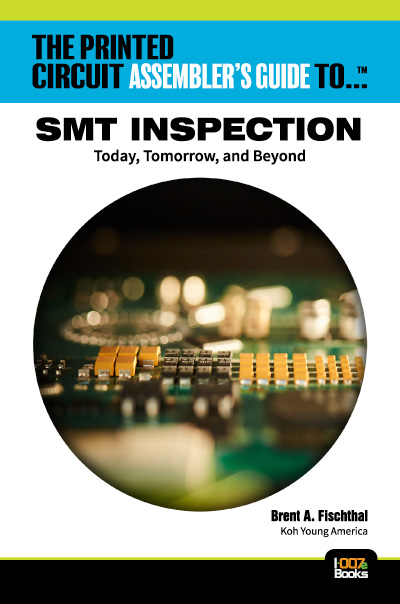More Information Webinar Background
Today, optical inspection systems are the preferred solution for in-line quality control in the SMT industry. Systems such as solder paste inspection (SPI) or automated optical inspection (AOI) for pre- and post-reflow are almost standard in every production facility. In the early days of optical inspection, SPI and AOI systems were based on 2D inspection technology. These 2D systems were looking at different grey levels for solder paste, solder joint, and component detection. Most decisions were made by a “good/bad” comparison to reference images, or “golden boards.” But for the solder paste inspection, the most important process indicator for good solder joint quality was missing—namely, paste volume. Consequently, 2D technology for SPI became redundant when 3D measurement solutions were introduced. Years later, the same situation began to occur for AOI.
Session Details
True 3D to Overcome Inspection Challenges
Some AOI solutions offer a limited level of 3D coverage for components and solder joints. Full 3D coverage is needed to identify boards with defects and help manufacturers monitor their performance. These 3D AOI systems not only inspect common defects, such as missing or wrong components, but accurately identify coplanarity and lead-bridging issues, which are prevalent in small packages and BGAs.
6m 32s
Using IPC-610 to Measure Solder Joints
True 3D AOI helps to verify solder joint quality with measurement conditions adhering to the various IPC-A-610 standards. Consider that for Class 3, the highest standard of the IPC classes, the standard for rectangular chip components calls for a minimum fillet height that is less than the solder thickness, plus 25% component thickness, or the solder thickness plus 0.5 mm [0.02 in], whichever is less. This quality standard translates into a Z-dimension suited for a 3D algorithm. However, due to specular reflections of solder joints, only true 3D inspection can offer reliable solder joint results.
3m 38s
Data Integrity
The introduction of True 3D imaging solved many of the lingering inspection challenges in the market. By measuring components and solder joints, and then offering critical height information to the inspection algorithms, users could identify errors such as pad overhang and insufficient solder. The 3D data is only valid when 3D technology is used for all component types to extract the exact body dimensions. The combination of measurement and process data piles collected from SPI and AOI systems, printers, and mounters, allows delivery of advanced AI features with reliable “big data.”
5m 08s
Not All 3D is Created Equal
While many 2D AOI systems remain in use, the effort needed to keep this technology at a low level of escape and false-call rates is tremendously high. This is because the concept of comparing reference images is still the main technique applied in 2D systems. With the introduction of 3D AOI, a transition to true 3D measurement is taking place. The benefits are clear: rock-solid threshold and inspection tolerances provide a low escape and false-call rate with minimum debugging effort.
6m 08s
Minimize False Calls and Escapes
Ultimately, the drive is to provide inspection solutions that perform at the highest level. This means that they catch every defect accurately and do not call out defects when there are none. Inspection utopia means no escapes and no false calls, all derived at optimal line speed. This desire to drive down both of these key performance indicators is paramount for those developing and building inspection tools.
5m 59s
Multi Point Inspection
Manufacturers can further improve line performance with tools for real-time monitoring to instantly display relevant process parameters at remote locations for immediate analysis and action. Combining multi-point views from SPI, pre- and post-reflow AOI with real data management and monitoring allows operators to determine actionable insights to optimize the processes. The additional adaptation of AI-powered process tools takes optimization to a higher level.
6m 11s
Advanced Process Control and Inspection
With the benefits of printers communicating with solder paste inspection machines known, what about mounters and AOI? Connecting mounters with AOI delivers obvious benefits such as improved yields, especially in high density boards. The mounters use the received data to update the placement program; thereby, ensuring the components are placed onto the solder deposits rather than onto the substrate pads. This approach uses the self-alignment principle to increase production yields and reduce defects.
7m 25s
Going the Distance With AI
In recent times, artificial intelligence has demonstrated promising potential across a variety of industries, from self-driving vehicles to virtual doctors, and it has far-reaching applications within the manufacturing sector. By using the right mixture of AI technologies, manufacturers can boost their efficiency, improve flexibility, speed up processes, and even achieve self-optimizing processes. The SMT industry is no exception and, with a chronic shortage of skilled labor, AI seems a natural fit. Equipment providers are enabling the smart factory of the future by adopting AI to generate “knowledge” from “experience.”
7m 24s
AI in Action: Koh Young Auto Programming (KAP)
Industry-leading 3D profilometry technology converges with Koh Young’s proprietary AI technology to deliver true automatic programming. This geometry-based software solution reduces the programming process to minimize time to production and reduce costs.
7m 53s
Understanding CFX and Hermes
Initiatives like the IPC Connected Factory Exchange (CFX) and IPC-Hermes-9852 underpin efforts within the industry to develop standards and help create a smart factory. These M2M communication standards, guided in part by Industry 4.0, are altering the manufacturing process by improving metrics such as first pass yield and throughput by applying autonomous process adjustments.
3m 34s
Connectivity Using CFX and Hermes
Machine-to-machine (M2M) is the foundation that drives the smart factory vision, enabling automatic SMT line maintenance and management. The systems should be designed to work with the printer, mounter, conveyor, and other equipment types to simplify communication across the entire SMT line. Initiatives such as IPC-CFX, IPC-Hermes, and IPC-DPMX all help to pull the factory of the future into the present.
3m 38s
Smart Factory Success
Realizing a smart factory means taking a practical approach to process and systems, while examining areas to improve productivity. Combining initiatives such as IPC-CFX, IPC-Hermes, and IPC-DPMX with machine learning and 3D measurement data generated during inspection, helps manufacturers define inefficiencies and boost line efficiency. As new data is fed to these algorithms, they learn and optimize their operations to improve performance, developing intelligence over time.
3m 28s

